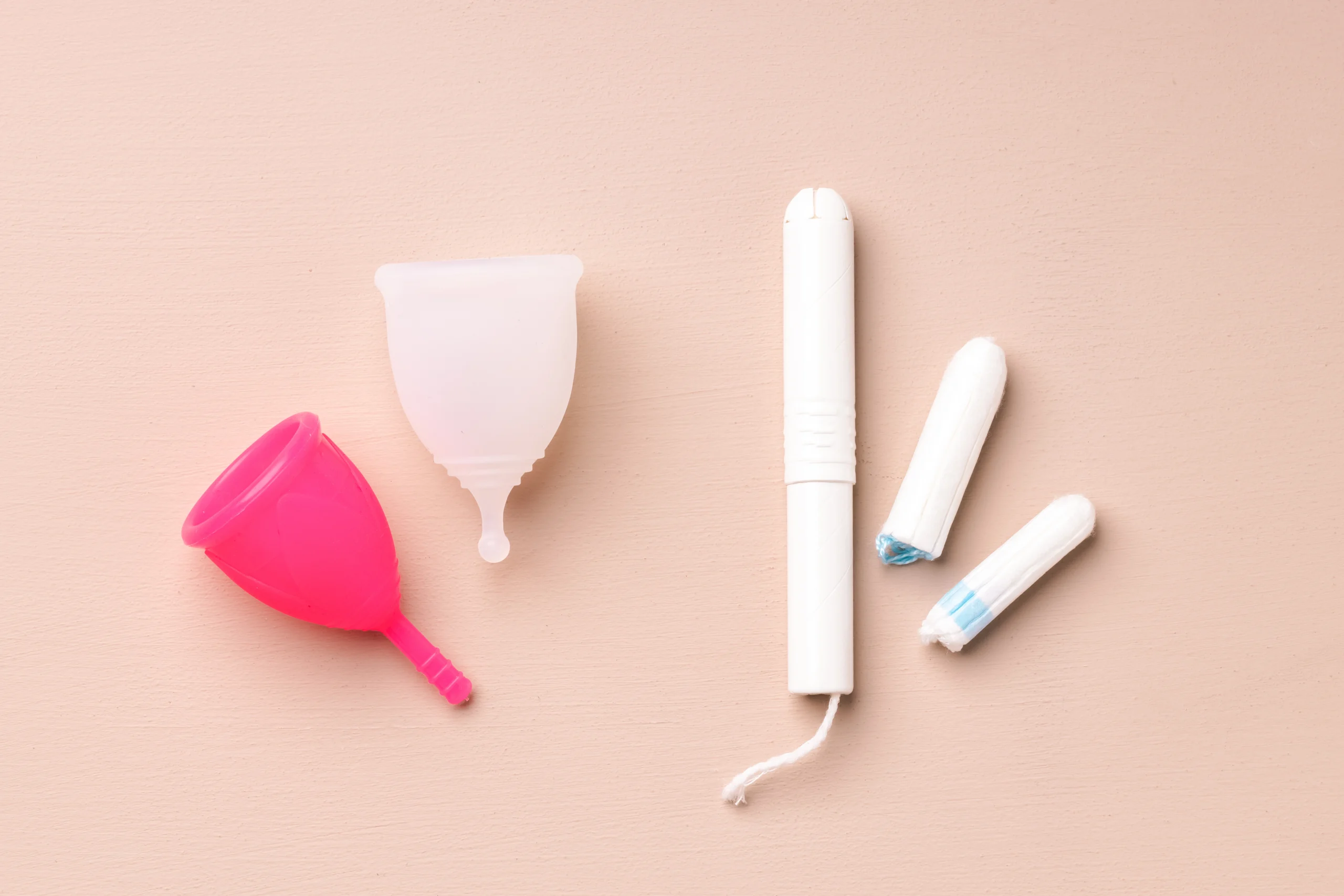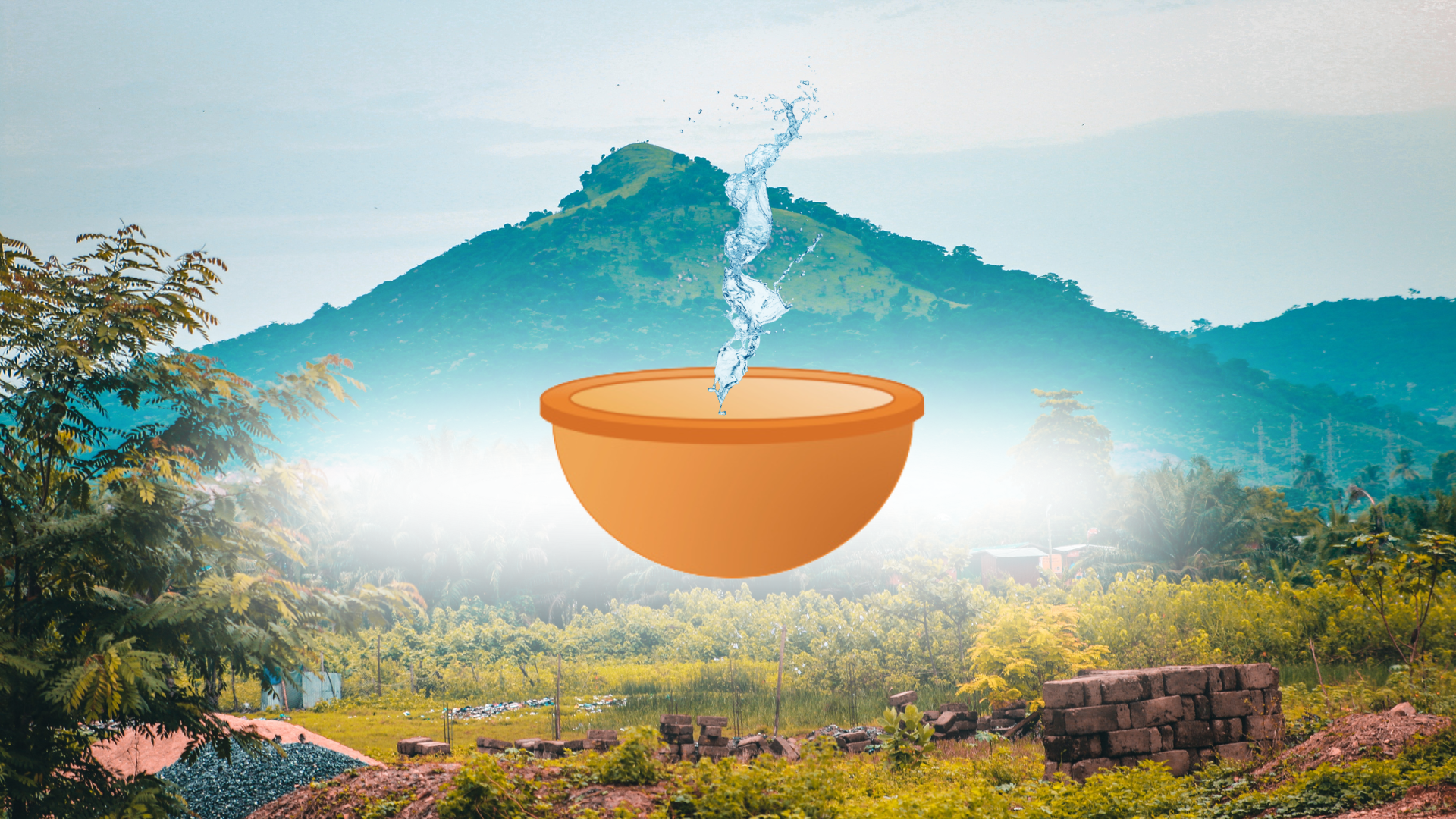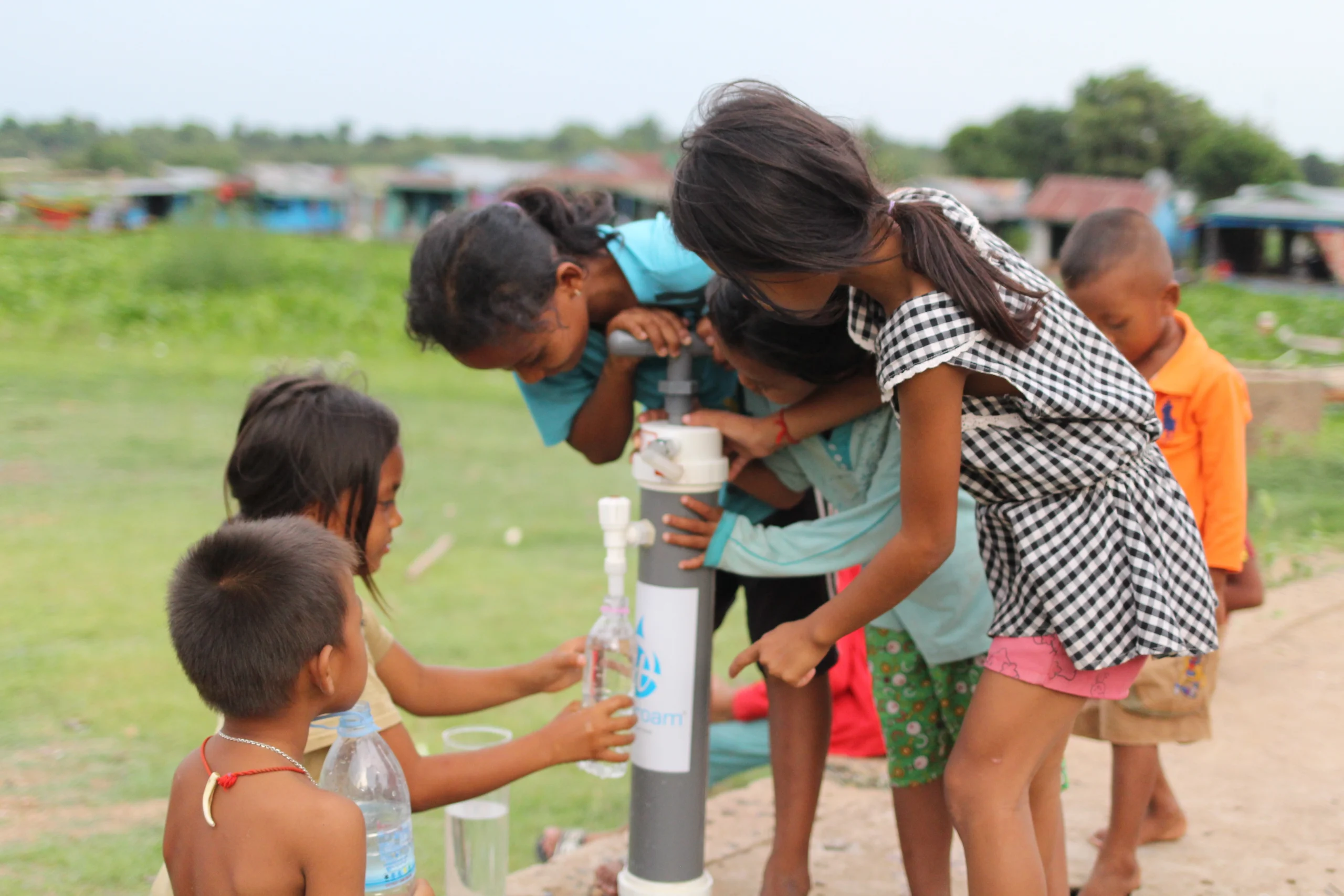The History of Water Purification
By Cameron Barnes
For as long as humans have walked the earth, we have sought out clean and fresh water. It’s the foundation for all life, necessary for every biological function. It’s a risky game though—clean water is essential, but drinking from contaminated sources can lead to disease, further dehydration, and even death. Because of this danger, safe water has been a major concern for all of history. After 300,000 years, we’ve developed some pretty interesting ways of getting it!
For Earth Day this year, let’s take a closer look at this essential substance by taking a step back in time. How did people clean their water when things like bacteria and viruses wouldn’t be discovered until centuries later? How were cities able to spring up miles away from running rivers and wells? To discover the answers, we’ll have to start at the very beginning of the history of water purification.
It won’t be an easy passage–we’ll have to travel over 14,000 years and journey from ancient Mesopotamia to the modern-day United States. We’ll witness different cultures, technologies, and thought systems, and probably experience some jetlag along the way. But it’ll be worth it; it’s an expedition that not only speaks to the richness of human ingenuity and history, but also to the enduring importance of clean and safe water.
12000 BC: Rivers and Rain
- Humans are primarily nomadic, living in small groups, hunting and foraging for food.
- “Water purification” are two words that wouldn’t go together in the same sentence, but there is a deep understanding that some water is more dangerous than others.
- The “cleanliness” of water is based primarily on how it looks and smells. Collecting rain and water from moving streams is the most reliable way to hydrate safely.
7000 BC: Irrigation
- Communities begin channeling water for irrigation systems. These crops mean that people don’t have to constantly be on the move, but also that more complex water distribution systems must be developed.
- Most cities develop complex plumbing and bathing networks, separating water used for sanitation and hydration. They pipe this water into communities from rivers and lakes using gravity and other natural tools. Cities in Egypt use hollow palm trees for these systems while those in China and Japan favor bamboo. In modern-day Iran, the qanat system, which works similarly to the Roman aqueducts, is built (and parts are still used today)!
- After being piped into the city, water is then often collected in large pots and allowed to sit until sediment settles. Clarity and smell still determine what is considered clean water and what isn’t.
2000 BC: Sand Filtering
- Ancient Greek & Sanskrit writings mention various water treatment methods like boiling, straining, and early gravel and sand filtering. Though the chemistry behind these systems wouldn’t be developed for centuries, people understand that boiled water is safer than untreated water, and notice that when poured through sand, water comes out cleaner and clearer than before.
- The I Ching, an ancient Chinese divination text, mentions the importance of regularly cleaning wells. This practice would have helped to prevent the spread of bacteria and viruses, even though the theories outlining such things were a long way from being developed.
1500 BC: Coagulation
- A big year for water purification! Around this time, Ancient Egyptians start using coagulation to clean their drinking water. By introducing alum (a coagulant) into vats of water, foreign particles are broken down and bonded to each other, forming bigger clumps that can be filtered out more effectively.
- Depictions of coagulation were even found on the tombs of Amenophis II and Ramses II. It’s the first recorded use of chemical treatment of water and similar processes are still used today!
500 BC: The Hippocratic Sleeve
- Hippocrates, an ancient Greek physician, speaks about the importance of clean water and develops his own filter.
- The filter, the Hippocrates’ Sleeve, is a cloth bag that boiled water is poured into in order to further strain out foreign particles.
- Around this time, watered-down beer and wine are more common to drink than plain water; the alcohol in these beverages actually helps to purify the water content!
300-200 BC: Roman Aqueducts & the Corriental Reservoir System
- Rome builds its famous aqueducts, a complex water distribution system that provides usable water to the entire city. Using gravity, these systems pipe clean water from springs into more heavily-populated areas. Drinking water is “filtered” primarily through aeration and kept separate from other used water and waste.
- In Tikal, an ancient city in Northern Guatemala, the Mayans develop the Corriental Reservoir System, a sophisticated water distribution system. The city is built on porous limestone that pollutes natural water sources in the area; the reservoir system is designed to both deliver water into the city and also purify it. The purification system has settling tanks and uses crystalline quartz and zeolite. Zeolite, a combination of silicon and quartz, is still used today in many modern filters!

500 – 1500 AD: The Dark Ages
- During this time of plague, famine, and war, there is not too much experimentation with water filtration. Research was being done, but modern science has disproved many of the theories developed in this time.
- Despite the lack of technological development, people were aware that clean water was important. Instead of drinking only water, then, many relied on the water content in alcohol and food for hydration.
1627: Francis Bacon & Desalination
- Francis Bacon, an English philosopher, experiments with desalination technology. He wants to see if it is possible to desalinate the ocean. In order to test his theories, he digs a hole near the surf and waits until water bubbles up through the sand, thinking that salt particles are larger than sand particles and will get trapped as they surface.
- His theories are ultimately disproved, but his experiments revive interest in water purification and form the basis for many future technologies.
1690: The Microscope
- Anton Van Leeunwenhoek, a Dutch microbiologist, builds on the work of scientist Zaccharais Janssen and his son Hans in 1590 to create a more advanced microscope.
- With this improved microscope, Leeunwenhoek studies water cultures and identifies tiny particles within them. This is perplexing because the water in the cultures was supposed to be “clean” and passed all the usual turbidity and smell tests. It’s the first time that bacteria and protozoa are discovered and is foundational to the way clean water is conceptualized moving forward.
- Around this time, a French scientist named Philippe de La Hire argues that every French home should have a sand purification system and develops the idea of clean water as a human right.
1750-1804: Water Filtration for the Masses
- During these years, water purification systems continue to be developed and implemented in cities. In the 1750s, Joseph Amy gets the first patent for a home water filtration system made of charcoal, wool, and sponge layers.
- Later, Robert Thom establishes the first city water filtration center in Scotland. It uses slow sand filtration technology and is one of the first instances of large-scale water purification for an entire community. Three years later, this water is distributed to households through a pipe system that more closely resembles what we see today!
1854: Cholera
- A cholera outbreak sweeps London, killing over 600 people. Doctor Robert Snow uses Leeunwenhoek’s microscope and proves that bacteria from a popular well is responsible for making people sick. This is groundbreaking; the well that he singles out was long believed to be clean and safe because it ran clear and smelled fine.
- Snow treats the well with chlorine, which works to break down chemical bonds in bacteria and viruses. This treatment is so effective against both cholera and typhoid that it becomes the dominant way to purify water in London. In fact, chlorine is still a standard method for water purification.
- In response, the British government mandates sand filters in all major city centers as a way to prevent future illness. This is one of the first instances of government regulation of water purification. Though it takes years to be implemented throughout the country, it sets the precedent for similar regulations down the line.
1870s: Louis Pasteur & Germ Theory
- Louis Pasteur, Joseph Lister, and Robert Koch develop Germ Theory – the idea that bacteria, though invisible to the naked eye, can lead to disease. Their model revolutionizes the scientific world and becomes foundational for the way that illnesses are understood and treated today.
- Louis Pasteur creates the Pasteur-Chamberland jugs, which are sophisticated water filters. The jugs are made of unglazed porcelain, which, when water is poured through, filters out foreign particles and microbes.
1972: Clean Water Act of 1972
- People start to become concerned about the environment; in particular, how wastewater and industry are impacting the health of communities. In response to protests and political pressure, the U.S. government passes the Clean Water Act, which targets industrial waste and prioritizes clean water. It’s one of the first times that the government passes legislation regarding water safety.
- A little later, in 1985, it becomes a national goal to provide clean water to every citizen.
2000s – Today: Clean water for All
- Many big cities have sophisticated water purification and distribution systems. Chlorine is the most popular method of purifying water in these large-scale networks. Concern exists about the side effects of ingesting large quantities of these networks Further, new technologies are working to reduce the amount of chlorine in these systems as well as upgrade the lead pipes used for distribution to more modern, safer, copper pipes.
- Individual purification systems like those from Village Water Filters and dissolvable tablets from P&G make water purification available in areas without city-wide distribution.
- Despite the introduction of more sophisticated technology and increasing awareness about the importance of clean water, accessibility remains an issue. Over 2 billion people lack access to safe water or live in places of water scarcity; this has a profound impact on not just a communities’ health, but their economic development, business infrastructures, and school enrollment rates as well.
- In 2010, the United Nations General Assembly recognizes access to clean water as a universal human right.
Learning from the past
The history of water purification is long, nonlinear, and continually developing. Spanning continents and centuries, it is a testament to both the importance of clean water and the power of human invention. Throughout the ages, it has demonstrated one unavoidable fact: clean water is at the heart of the human experience. It is essential to not only health and wellness, but our very survival.
In this way, it is not just our responsibility to protect clean water sources and keep our planet healthy–it’s our imperative. The history of water purification is a success story in many ways, but it is also a tale of our limitations. The search for clean water is far from over. 8 out of 10 people in rural areas don’t have reliable access to safe water. Increasing global temperatures threaten to contaminate water supplies and introduce pathogens to sources previously safe. Water purification systems are invaluable, but it is a healthy planet that makes everything possible.
At Business Connect, we believe in a humanitarian universal right to clean water and the sustainability of our planet. We partner with innovative companies to support infrastructure in communities impacted by changing temperatures and natural disasters. If you are interested in our work or our cause, read more here about how to become a partner in distribution.
From all of us at Business Connect—we wish you a happy Earth Day and a healthy start to the spring season.





